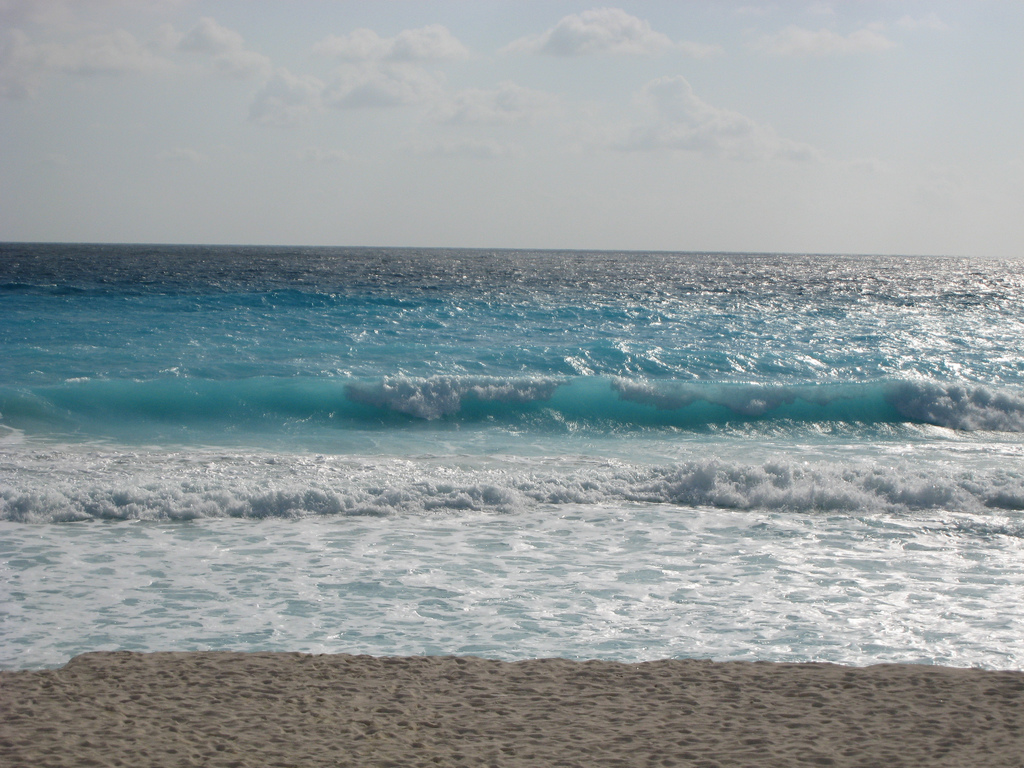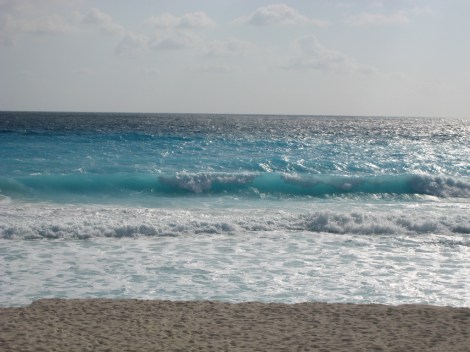Evidence of climate change is all around us, manifesting in superstorms, wildfires, and melting ice. But temperature spikes recorded by weather stations over the past 15 years have been more muted than was previously the case, and lower than climate models had predicted.
That’s leading many people to wonder: Is global warming less of a threat than we had feared?
Climate scientists have been noting for years that the atmosphere is heating up less quickly than expected. Since last year, a growing number have been suggesting that we adjust our warming projections downward. Just last week, 17 scientists called for exactly that in a letter published in the journal Nature Geoscience; they wrote that their latest projections for rising temperatures remain “in agreement with earlier estimates, within the limits of uncertainty,” but at the lower end of that range.
At issue is “climate sensitivity” — the extent to which temperatures warm as carbon dioxide levels rise. And central to the debate is “equilibrium climate sensitivity” — the temperature response to a doubling of carbon dioxide concentration in the atmosphere. (The CO2 concentration has already risen more than 40 percent since the industrial revolution, from about 280 parts per million to 400 ppm this month. And it is projected to nearly double the preindustrial level by 2050 — and then keep on rising.)
In its 2007 report, the Intergovernmental Panel on Climate Change projected that global average temperatures would rise by between 1 and 3 degrees Celsius once carbon dioxide levels doubled. The Nature Geoscience letter suggests that the rise would probably be between 0.9 and 2 degrees C, most likely 1.3 degrees. That 1.3 figure is lower than earlier most-likely projections, such as the IPCC’s, which suggested that an increase between 1.4 and 1.6 degrees C was most probable.
Phew! Everything is fine then, according to some sloppy news reports and optimistic headlines, which have suggested that such findings mean climate change isn’t such a daunting problem. It’s perhaps more comforting for the press to dwell on the minutiae of garden-variety scientific uncertainty than to consider the role of climate change in triggering droughts, floods, and killer storms.
Meanwhile climate skeptics have seized on the controversy and used it to bash climate science across the board.
As far back as 2009, some scientists were reporting [PDF] that the rise of land and sea surface temperatures had slowed down. But the flurry of more recent research and media attention has brought the controversy out of labs and into the limelight. Now people want to know: Where’s the missing heat?
To understand the answer to that question, we have to look beyond the places where we humans normally hang out. Much of the extra heat that’s been been accumulating here on Earth has wound up not over land but beneath the surface of the seas.
While the increase in land temperatures has slowed down, the warming of oceans has sped up. About 90 percent of global warming ends up heating the oceans — and that percentage figure has been even higher over the last 10 years or so.
Michael Mann, a renowned climate scientist who heads Penn State’s Earth System Science Center, tells Grist that’s the main reason why atmospheric temperatures aren’t rising as much as scientists thought they would. “A greater amount of heat has been sequestered in the ocean over the past decade,” he says.
Mann says there is no reason to believe that global warming has stopped, as some have claimed. “If you account for the various natural factors that dominate on the shorter timescales and remove them, it’s clear that the warming trend has proceeded unimpeded,” he says. “Keep in mind, by the way, that the past decade was the warmest on record. By that metric alone, it’s clear that global warming has not stopped.”
Meanwhile, an unusual flurry of volcanic activity has also helped to slow down global warming by releasing aerosols that have reflected solar radiation back into space. Some other factors might also have played minor roles in tamping down the planet’s fever. But, for the most part, the extra heat has in fact been piling up here on Earth — it’s been just a little harder to for us landlubbers to find.
Swimming with the fishes
Most of the heat has gone into warming the upper levels of the ocean, toasting the shallows close to the coastlines. But even that doesn’t explain where all the missing heat has gone.
Until recently, it’s been hard to get a read on temperatures deeper than 2,300 feet. There aren’t many weather stations down there. But research by the National Center for Atmospheric Research and the European Centre for Medium-Range Weather Forecasts shows that strengthening trade winds have been turning over the Pacific Ocean and pushing more of the heat into its depths. As much as 30 percent of the extra oceanic heat has been accumulating at these depths, the researchers wrote in a paper published this month in the journal Geophysical Research Letters.
“People often think of a desert, or they think of a hot place when they think of climate change,” says Matthew Huelsenbeck, a marine scientist with the climate and energy team at nonprofit Oceana. “And people often mistakenly think that climate change ends where the water begins. But climate change is significantly changing the oceans.”
OK, so, bummer that the planet is still warming up. But it’s relatively good news that the excess heat is being sucked up by the oceans, right? That’s pretty much our favorite place to dump all the shit that we don’t want here on land. Such as actual shit, be it treated and untreated. And enough plastic to sink a flotilla of ships. The ocean is acting like a big, blue Get Out of Jail Free card.
But wait just a hot minute. Though we humans live on land, we have a lot to lose as the seas warm up.
Oceans are home to fish, plankton, and other plants and animals that support fisheries and land-based wildlife — and they’re also home to a whole lot of ice. Hot oceans aren’t good for fish, and they sure aren’t good for ice.
“The heat is causing significant changes to marine ecosystems already,” Huelsenbeck says. “If we continue down this current path, were going to see fundamentally different oceans within our lifetime. It’s going to change everything from ocean circulation to the base of the food web. And commercially important species of fish have been shifting in their ranges significantly in the past 40 years.”
Since fish can’t switch on the AC like we can, they are fleeing for cooler waters as their longtime homes grow inhospitable. They’re pushing further away from shorelines, putting themselves out of reach of small-scale fishermen and the fishing fleets of the many developing nations that rely on small boats and nets.
The fleeing fish are headed toward the melting poles.
“The Arctic is going to become a place where we need good fisheries management and good cooperation between nations, because there could be a lot of fish heading in that direction for the first time,” Huelsenbeck says.
And as the icebergs and sheets of sea ice around the poles melt, heated from beneath by warming waters and from above by warming air, their progressive demise will continue to push up global sea levels.
And let’s not forget that warmer oceans can mean more violent storms here on land.
Not forever lost at sea
Heat from the oceans could yet resurface and burst back over land, perhaps as the Pacific Ocean waxes and wanes between “El Niño” and “La Niña” events. And Mann points out that just because the oceans have been sucking up a certain amount of heat recently doesn’t mean that trend will continue.
“The ocean absorbs heat at the surface, and mixes that heat down into the interior subsurface of the ocean,” Mann said. “There is considerable randomness to this process, and one can see purely natural random swings in one direction or another in that last decade. There’s a good chance that’s what we’re seeing. But since it’s a natural swing, it will likely swing back in the other direction. So it doesn’t help us as far as long-term surface warming is concerned.”
We can’t be sure how much the globe is going to heat up as we saturate the atmosphere with greenhouse gases. But it’s clear that the globe is still warming, with the oceans taking up most of the heat. Proposals to update warming projections suggest tweaks that are relatively minor.
That means our hopes of cashing in that Get Out of Jail Free card appear to be quickly melting away, like a blue snow cone on a sunny summer’s day.





